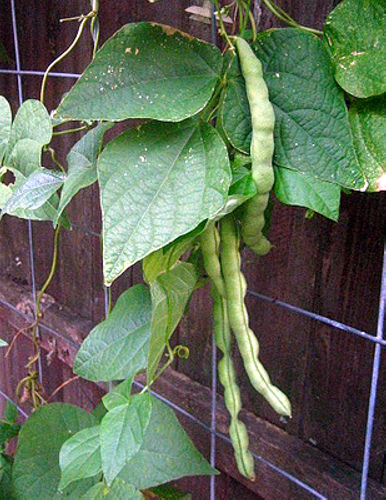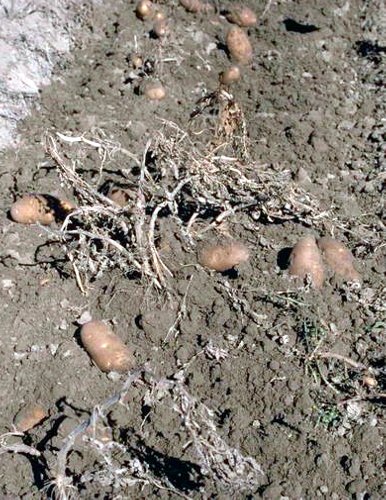Vegetable garden harvest: What lies beneath and above?
How to tell when and if your green beans, carrots and potatoes are ready for harvest.
Harvest time in your vegetable garden is what you have been waiting for because now you get to eat the fruits and vegetables of your summer’s labor. But for many new gardeners, the big question is when do you harvest? For some crops like tomatoes and peppers, it’s pretty obvious. Michigan State University Extension hotlines around the state receive calls every year about how to decide when that special vegetable is ready to go.
Green beans
Green beans are a vegetable that you can pick at several different times depending on your culinary intentions. Beans can be picked when they are young, smooth and around 3 or so inches long. At this size, they are perfect for steaming or sautéing and are very tender. If you wait until the beans are longer and still smooth, this is when many people pick them. Or, you can wait until the beans are slightly lumpy but still green. The beans inside are visible under the skin and they now require longer cooking. This is the stage where they are called “shelly beans.” Often, they are cooked with a chunk of bacon or smoked pork.

Green beans. Photo credit: Jenny Addison, Flickr.com
Carrots
After planting and thinning the carrots so they have enough room to grow, begin looking for the top of the root to break the ground. The top of the root is called the shoulders. When the shoulders are visible, wait until there seems to be a decent sized diameter. Pull one up as your test case. Once you have the size that also gives you a decent length, pull those and wait on the others until they are big enough to harvest. That magic size very much depends on what variety of carrot you are growing.
Potatoes
Potatoes can be ready to harvest as early as the end of August or September, but the smart gardener will take a trip to the vegetable garden at the time the potatoes are flowering or shortly after. You are in search of the magical “new potatoes.” This is the time that potatoes are forming on the potato roots. Visit the garden and carefully dig into the soil close to the plants. Near the surface, you can find some small potatoes that can be gently removed. These are the new potatoes. At this young age, the potatoes are very sweet. Remove a few for a meal and marvel at the delicate taste.

Potatoes. Photo credit: Howard Schwartz, Colorado State University, Bugwood.org
For the big harvest, wait a bit longer for the potato plants to begin to shut down and collapse. The potatoes are now ready for harvest. They can be removed immediately or they can rest quietly in the soil for a few more weeks. Just dig them before the soil freezes. The important part of the potato harvest happens now. Dig them carefully to avoid skin damage. At this stage, the skin is very tender. Move the potatoes immediately to a shady place. If the potatoes are in the sun for even a short period of time, the skin begins turning green. This is solanine that is poisonous and makes the potatoes bitter and inedible. If trimming off a small area of green skin, it is critical to go deep enough so that no green is visible.
Allow the potatoes to dry in a single layer for about two weeks for the skins to toughen up or cure so they can withstand storage. Put them in a single layer on newspaper and turn them periodically. Now, your garden growing adventure can last even longer.



 Print
Print Email
Email